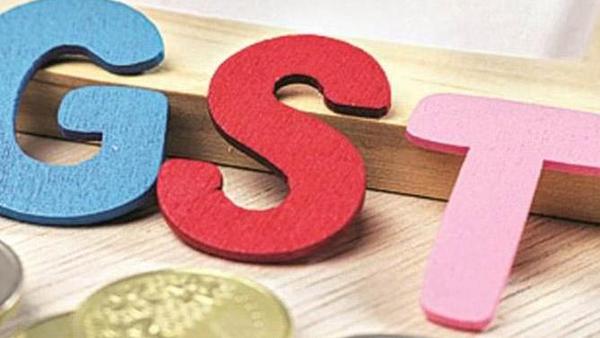Contents
- Here are the 15 most significant facts about GST listed for you
- 1. India waited 17 years for GST
- 2. 160 countries across the world have GST
- 3. Amendment of Constitution
- 4. Not all commodities are included under GST
- 5. Simple and secure online procedures
- 6. GST eliminates the cascading effect of tax
- 7. Defined treatment for electronic-commerce operators
- 8. Recipients are entitled to credit only
- 9. States compensated for five years
- 10. Free supplies are taxable under GST
- 11. GST is a tax supply
- 12. GST means increased operational costs
- 13. Definition of Goods and Services under GST
- 14. Higher threshold for registration
- 15. Creation of Common National Market
- Conclusion
GST or Goods and Services Tax is an Indirect Tax that has replaced multiple other indirect taxes in India. The Goods and Services Tax was passed in the Parliament on the 29th of March, 2017. GST is the biggest tax reform in India founded on the notion of creating a “one nation, one market, one tax.”
The Indian Government finally implemented the GST in the year 2017. The single most significant indirect tax regime had finally kicked into force. Along its way, it dismantled all the inter-state barriers concerning trade and commerce. In recent years, there has been a huge impact of GST on real estate in India.
The rollout has renewed the hope of India’s fiscal reform policy and composition scheme under GST, regaining momentum and also widening the economy. There are, however, fears of disruption, embedded in what is perceived as a rushed transition which may not entirely be in favour of the country’s economy. If we look at the long-term effects, there are both advantages and disadvantages.

Here are the 15 most significant facts about GST listed for you
1. India waited 17 years for GST
India has indeed waited 17 long years for the GST to be conceptualized and finally put into force. In 2000, the Vajpayee government started a discussion on GST by setting up an empowered committee headed by Asim Dasgupta, the then Finance Minister of India.
2. 160 countries across the world have GST
Almost 160 countries around the globe have implemented GST or VAT in some form or the other. For a fact, France was the first country to have introduced GST. Since India is a federal country, it has a dual-GST structure – The Central Goods and Services Tax (CGST) and State Goods and Services Tax (SGST).
3. Amendment of Constitution
The Constitution of India has been amended to insert articles that empower the Government of India to levy GST. Before this amendment, there was no concurrent power of taxation between the State and the Centre. The same transactions could not be taxed by the Centre and the States simultaneously in the previously present indirect tax framework, but the GST [or GSTR-9] has explicitly allowed the same.
4. Not all commodities are included under GST
Some goods and/or services are taxed separately or even subjected to earlier taxes as well as GST, such as alcohol for human consumption, petroleum products viz. petroleum crude, motor spirit, high-speed diesel, aviation turbine, natural gas, tobacco and tobacco products, real estate sector and lastly electricity.
5. Simple and secure online procedures
The entire process of GST can now be done online, which has made the whole process of tax return filings much simpler. It has proven beneficial especially for start-ups, as now they do not need to get different registrations such as Value Added Tax (VAT), Excise Duty and Service Tax.
6. GST eliminates the cascading effect of tax
GST or Goods and Services Tax is a comprehensive, multi-staged tax system, designed to bring indirect taxation under one single unified process. It has, most importantly, eliminated the cascading effect of tax or the “Tax-on-Tax” effect that was evident earlier.
7. Defined treatment for electronic-commerce operators
Before the introduction or GST, the e-commerce industry: the supply and/or receipts of goods and services, transmitting of funds or data over an electronic network, primarily the internet, was not defined. But the GST has led to remarkable growth in the e-commerce sector.
Marketplaces have provided retailers with additional channel of sales and reach which was previously unimaginable for an offline retailer. The number of sellers and their businesses have grown significantly.
8. Recipients are entitled to credit only
The Goods and Services Network (GSTN) system matched the details of the tax paid by the suppliers to the details of loan claimed by the recipient. In cases where the recipient claims excess credit, it shall be disallowed automatically till the time the return is rectified.
9. States compensated for five years
GST is a consumption based tax, which means that high consumption states would collect more tax revenue than top manufacturing states. Therefore, the Centre has agreed to compensate the States for any loss of tax revenue under GST for the first five years.
10. Free supplies are taxable under GST
Some supplies are leviable to GST even if no consideration has been paid, as consideration is not a mandatory condition for a supply to be taxable under GST.
11. GST is a tax supply
For GST, the taxable event is the supply of goods and/or services. This term covers all kinds of existing taxable events within its ambit.
12. GST means increased operational costs
GST is changing how tax is paid. Businesses are now required to employ tax professionals to be GST-compliant. This also implies that the cost for small businesses will increase gradually as they will need to hire and train expert employees for GST-compliance.
13. Definition of Goods and Services under GST
The definition of goods is “any and every kind of movable property,” whereas services are defined as “anything other than goods.” As per the literal meaning, any “immovable property” is also treated as services for GST.
14. Higher threshold for registration
Before GST, under the VAT structure, businesses with a turnover of more than Rs. 5 Lakh were liable to pay VAT, but under the GST regime, this threshold has been increased to Rs. 20 Lakh, which exempts many small traders and service providers.
15. Creation of Common National Market
GST has given a boost to India’s tax to GDP ratio that aids in promoting economic efficiency and sustainable long-term growth. It has facilitated in eliminating economic distortion and forming a common national market. GST has also led to a uniform tax law among different sectors concerning indirect taxes.
Conclusion
The Goods and Services Tax law is still in its preliminary days. It is evolving every day and believed that the country would climb several ladders in the ease of doing business with the implementation of the most important tax reform in the history of our country. Change is never easy. However, the Government is constantly trying to smoothen the road to GST.



